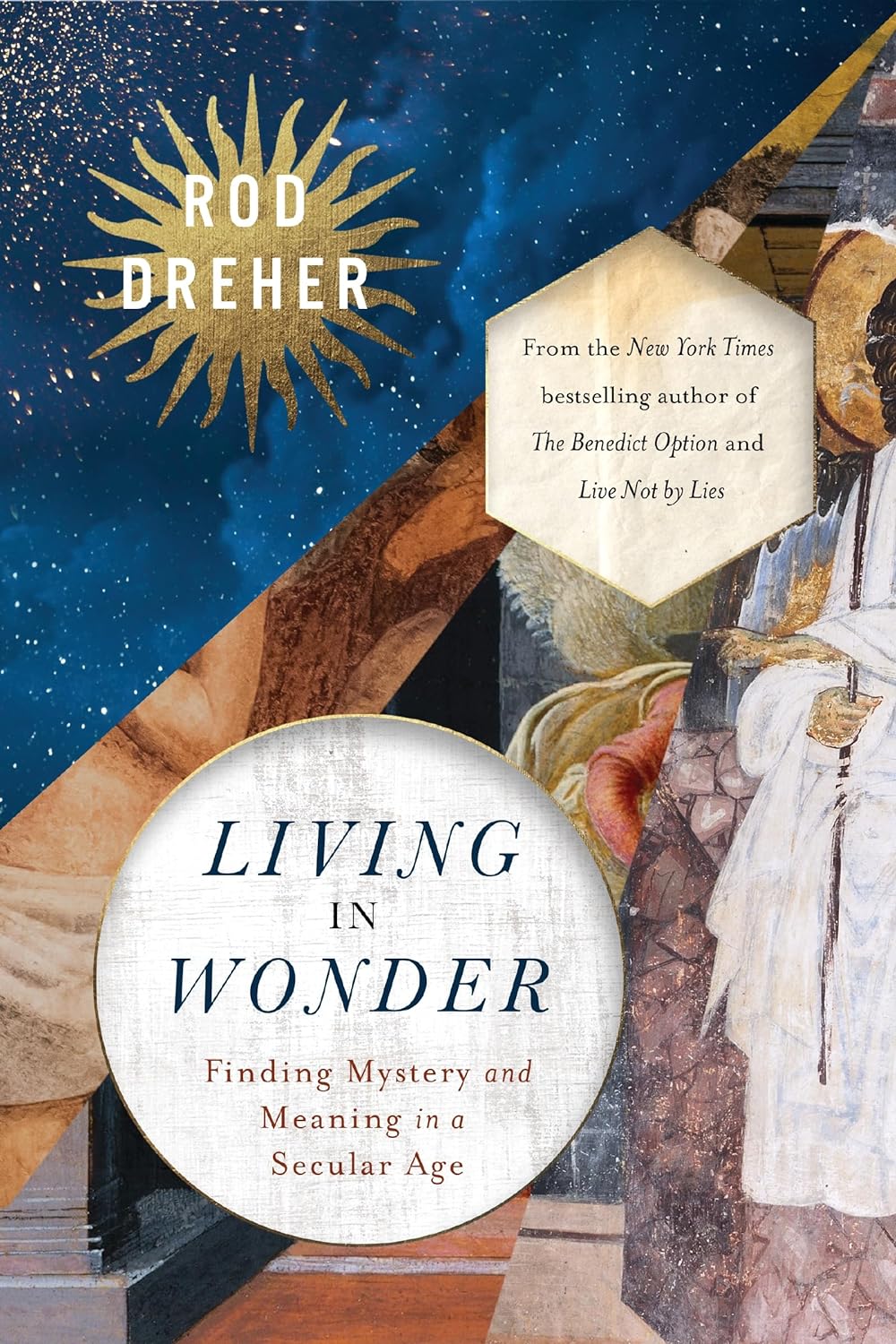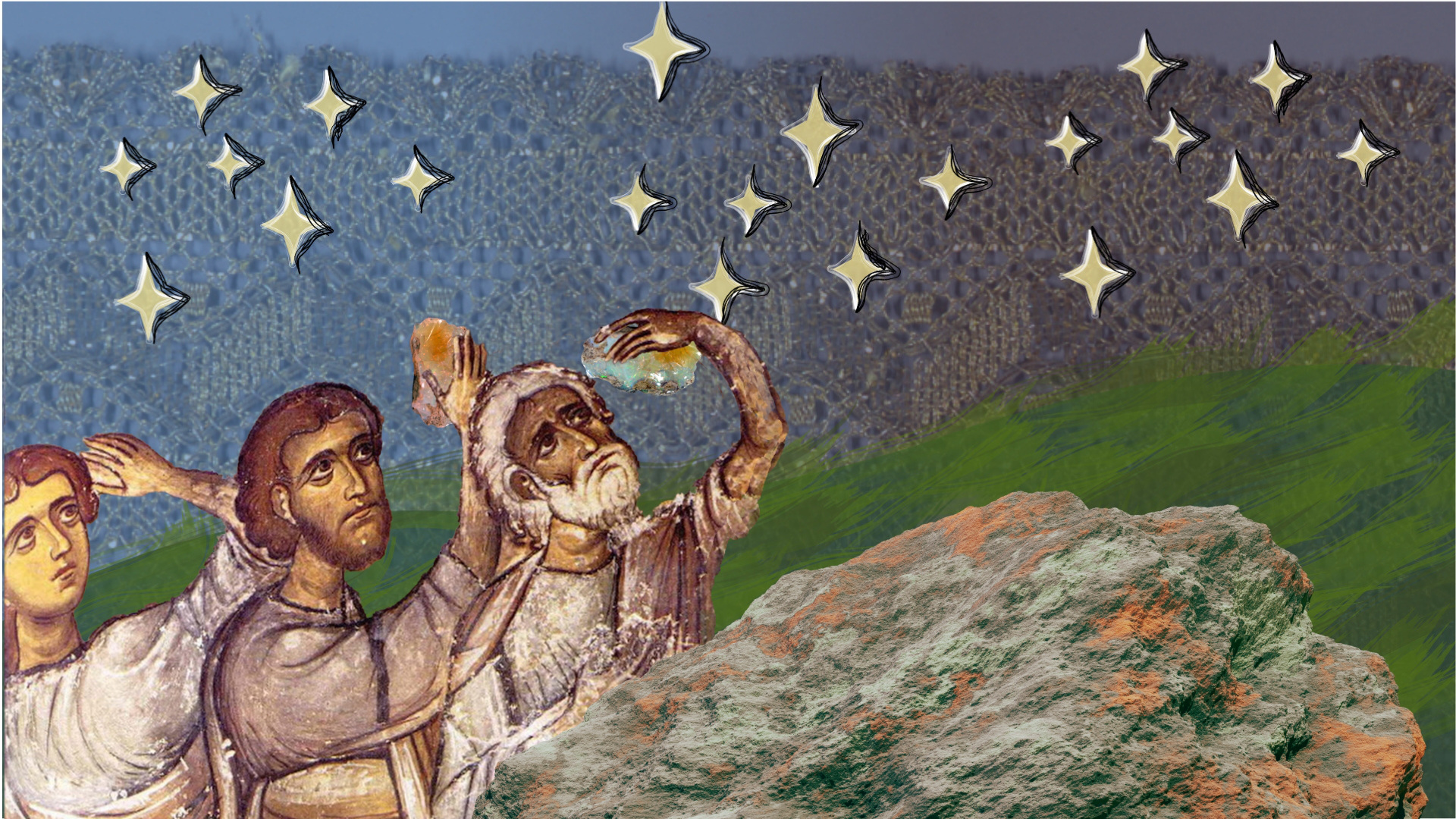We face a crisis of meaning in the West, a mass confusion over our true identity and purpose. Many feel adrift in the world with no sail, rudder, map, or compass. As a young man confessed to me recently, “I walk out of my house each morning and am overwhelmed with anxiety. I don’t know why I am here.” By jettisoning metanarratives, especially the Christian worldview, our culture has saddled people with the impossible burden of fabricating their own meaning and purpose.
As I read Rod Dreher’s Living in Wonder: Finding Mystery and Meaning in a Secular Age, Billie Eilish’s hauntingly beautiful song “What Was I Made For?” reverberated in my mind. The song, written for the film Barbie, taps into the existential ache over the seeming emptiness and cruelty of existence so common in our culture. Humans have an innate desire for meaning and mystery.
Dreher, a visiting fellow at the Danube Institute, argues there’s “a loss of a meaningful sense of God’s presence and of the existence of meaning and purpose in the world” (71). His basic explanation for this is the rise of materialistic modernism, which displaced Christianity from the cultural imagination in the West. Dreher’s proposal is to pursue “Christian re-enchantment” (153), mainly through “an infusion of authentic, time-tested mysticism . . . from the Eastern churches” (16).

Living in Wonder: Finding Mystery and Meaning in a Secular Age
Rod Dreher
Living in Wonder: Finding Mystery and Meaning in a Secular Age
Rod Dreher
In Living in Wonder, Rod Dreher argues for an Eastern Orthodox approach to wonder in the world. He shares stories of miracles, rumors of angels, and outbreaks of awe to offer hope, as well as a guide for discerning and defending the truth in a confusing and spiritually dark culture, full of contemporary spiritual deceptions and tempting counterfeit spiritualities.
Dark Enchantment
Unfortunately, the search for re-enchantment has led many into the arms of the occult and other forms of “dark enchantment” (128). Materialism is giving way to a return of neo-paganism as a dominant worldview, often taking the form of practices like crystals, manifesting, witchcraft, and astrology. Predictably, the result isn’t flourishing and freedom but ruin and spiritual slavery. Not all encounters with the spiritual realm are created equal.
In journalistic fashion, Dreher relays several compelling stories illustrating the dangers of spiritual darkness and oppression. The demonic is real. Yet the real solution to disenchantment is Christ. This is good, as far as it goes.
The demonic is real. Yet the real solution to disenchantment is Christ.
However, Dreher’s analysis of the occult is, at times, conspiratorial and bizarre. He favorably quotes an exorcist who believes that “we are in the middle of a concerted and well-orchestrated war” in which the occult is “supported by the media, big corporations, politicians, and our government” (105). In expressing his concern about the spiritualization of technology, Dreher shares the Google whistleblower’s account that their AI program “had achieved consciousness” and that the engineers had participated in “a ritual committing it to the ancient Egyptian deity Thoth” (125). These accounts are intriguing but anecdotal.
Though Dreher doesn’t think there’s a demon under every rock, he thinks there’s probably a demon behind every UFO. By his account, demons appear as aliens because they “are the kind of godlike beings that a secular society—one in which science and technology hold supreme authority—can believe in when they have discarded the God of the Bible” (114). Such ideas—mixed with accounts of generational curses, psychedelic trips, and demon possessions—are his primary supports for the need for Christian re-enchantment.
Christian Re-Enchantment
According to Dreher, Christian prayer is the primary way to recover a sense of God’s presence and experience enchantment in a secular age. He writes, “It turns out that attention—what we pay attention to, and how we attend—is the most important part of the mindset needed for re-enchantment. And prayer is the most important part of the most important part” (142). However, this solution isn’t as easy as it sounds. Anyone who prays regularly knows that the difficulty isn’t so much knowing what to do as putting down our phones and doing it.
To Dreher’s credit, I must say that after reading his book, I’m praying more. Unfortunately, Dreher’s advice relies on caricatures of other Christians. For example, he repeatedly states that Protestant spiritual practices are deficient in providing worshipers with an enchanting encounter with the true and living God. And yet no one can read about Martin Luther’s prayer life and find it devoid of enchantment, for instance. Dreher ignores the incredibly rich resources Protestants have on prayer. The works of John Calvin, John Knox, John Owen, and, more recently, Tim Keller and Paul Miller come to mind.
Prayer is certainly a means by which God communicates and through which we experience his grace (149). However, it’s incomplete without the grace that flows to us from God’s Word. Dreher nods toward doctrine “based on Scripture” (263), but he does a poor job of grounding his understanding of the means of grace in Scripture. In fact, Scripture is largely absent from Dreher’s lengthy discussion of spiritual practices—an unfortunate gap in his proposed solution, as one can’t experience the fullness of re-enchantment apart from God’s “living and active” Word (Heb. 4:12).
Another Reformation Needed
Dreher’s criticisms of other Christians don’t stop at the practice of prayer. He makes it clear that, in his mind, Protestantism simply isn’t enchanting enough. Dreher argues that the Reformation contributed to disenchantment by undermining a sacramental vision of the universe. Nature doesn’t have to be a sacrament to be enchanting. Notably, his account of the supposed disenchantment of Protestantism largely ignores the supernatural claims of charismatics and Pentecostals, not to mention the less extravagant experiences of spiritual reality of many Reformed Christians.
Scripture is largely absent from Dreher’s lengthy discussion of spiritual practices—an unfortunate gap in his proposed solution.
Instead, his preferred solution is to adopt a version of panentheism in which “all created things bear divine power and participate in the life of God” (24). Thus, despite Dreher’s periodic denials, it’s apparent his argument is for conversion to Byzantine Christianity rather than for a broader focus on Christian re-enchantment.
However, as Patrick Collinson argues, the Reformation was “an episode of re-Christianization” that disrupted “a process of secularization with much deeper roots.” It was primarily a movement of Christian re-enchantment, the very thing this book prescribes. Contra Dreher, the West may actually need another Reformation to escape the disenchantment of our age.
Reading Dreher is always interesting, though this book is somewhat disjointed compared to his earlier works. Still, it points readers to Christ to find meaning and mystery in an age of darkness, disenchantment, and technological tyranny. Yet as we watch Dreher’s spiritual evolution in real time with each book and new adventure, we should take his latest prescriptions for the faith with a healthy grain of salt.
